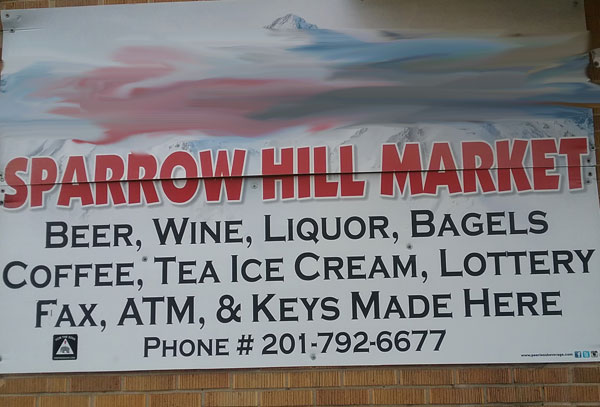I’m not particularly bothered by the lack of commas at the ends of the lines. I am bothered, as I’m sure you are, by the missing comma after “tea.” (Unless this store sells tea ice cream. Which is a thing, but not in my neighborhood.)
But I’m more bothered by the fact that this liquor-plus-everything store claims to make ATMs, as well as fax, lottery, tea ice cream, and so on.
You may laugh, but this kind of error appears frequently in the writing of educated people. It’s an issue of parallelism. When you have a list, if something before or after the list applies to one item on the list, it applies to all.
The sign could be fixed replacing the comma and ampersand after ATM with a period. How would you fix this sentence?
Data were collected through surveys, focus groups, and key informant interviews with executive directors and site managers.
That’s fine if the surveys and focus groups were with EDs and site managers, but they weren’t. Let’s try something else.
We collected data through surveys and focus groups with program beneficiaries and through key informant interviews with executive directors and site managers.
(Notice how I also fixed the passive voice? I thought you’d approve.)
Here’s a tougher one:
A vertical career lattice enables mobility within and across organizations and roles.
Mobility within roles? What would that be? I wrote the authors a note to make sure I wasn’t missing something, but I think my interim fix captured the intent.
A vertical career lattice enables mobility both within and across organizations.
The takeaway: When you link series of words with “and” or “or,” make sure that any verbs or modifiers pertain to every word in the list, not just some.
Also, don’t make ATMs. If you make tea ice cream, please invite me over.


